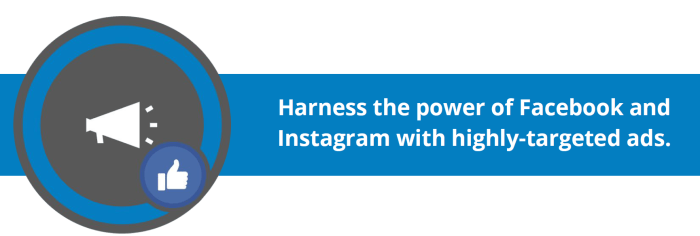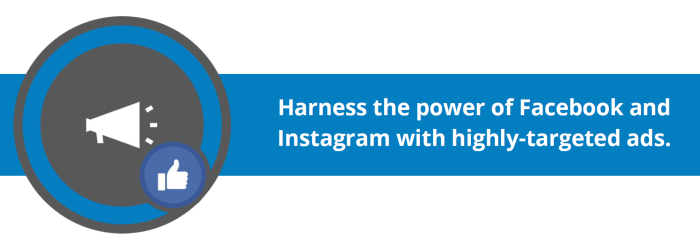Digital Advertising Basics introduces you to the fundamentals of online marketing strategies, covering everything from defining digital advertising to creating effective ad campaigns. Get ready to dive into the world of digital marketing!
Overview of Digital Advertising Basics
Digital advertising refers to the practice of promoting products or services through online platforms, reaching a target audience through various digital channels. In today’s marketing landscape, digital advertising plays a crucial role in connecting businesses with their customers in a more personalized and engaging way. By utilizing digital advertising, companies can increase brand awareness, drive website traffic, generate leads, and ultimately boost sales.
Examples of Digital Advertising Channels
- Display Ads: These are visual advertisements that appear on websites, apps, or social media platforms. They can include images, videos, or interactive elements to capture the audience’s attention.
- Social Media Ads: Platforms like Facebook, Instagram, Twitter, and LinkedIn offer advertising options to target specific demographics, interests, and behaviors of users, making it easier to reach the right audience.
- PPC (Pay-Per-Click) Advertising: This model allows advertisers to pay a fee each time their ad is clicked. It is commonly used in search engine advertising, like Google Ads, where businesses bid on s relevant to their target audience.
- Video Ads: Video content is increasingly popular, and platforms like YouTube and TikTok provide opportunities for businesses to engage with their audience through targeted video ads.
Types of Digital Advertising

Digital advertising comes in various forms, each with its own unique approach and strategy. Let’s dive into the different types of digital advertising models and methods.
CPM, CPC, CPA
- CPM (Cost Per Mille): This model charges advertisers for every 1,000 impressions of their ad. It focuses on brand exposure and awareness.
- CPC (Cost Per Click): Advertisers pay for each click on their ad, emphasizing user engagement and interaction.
- CPA (Cost Per Acquisition): With this model, advertisers only pay when a specific action is completed, such as a purchase or sign-up. It focuses on driving conversions.
Search Advertising vs. Display Advertising
- Search Advertising: Involves placing ads on search engine results pages based on specific s. It targets users actively searching for information, products, or services.
- Display Advertising: Utilizes visual ads across websites, apps, and social media platforms to reach a broader audience. It focuses on brand visibility and awareness.
Native Advertising
Native advertising blends seamlessly with the content of a website or platform, making it less intrusive and more engaging for users. It often appears as sponsored content or recommendations, enhancing user experience and increasing ad effectiveness.
Targeting and Personalization in Digital Advertising

In the world of digital advertising, targeting and personalization play a crucial role in reaching the right audience and maximizing the impact of ad campaigns. Let’s dive into how these strategies work and their effects on consumer behavior.
How Targeting Works
Targeting in digital advertising involves using data and analytics to identify specific demographics, interests, behaviors, or other criteria that are relevant to a particular ad campaign. By targeting the right audience, advertisers can ensure that their ads are shown to those most likely to be interested in their products or services. This not only increases the effectiveness of the campaign but also helps in maximizing the return on investment.
- Advertisers can target audiences based on factors such as age, gender, location, interests, online behavior, and more.
- Targeting can be done through various channels, including social media platforms, search engines, websites, and mobile apps.
- By reaching the right audience, advertisers can improve the relevance of their ads and increase the chances of conversion.
Role of Data and Analytics in Personalizing Ad Campaigns, Digital Advertising Basics
Data and analytics play a crucial role in personalizing ad campaigns by providing insights into consumer behavior, preferences, and trends. By analyzing data, advertisers can create highly targeted and personalized ad campaigns that resonate with their target audience.
- Data allows advertisers to segment their audience and create customized messages that are tailored to specific groups.
- Analytics help in measuring the performance of ad campaigns and optimizing them for better results.
- Personalization based on data can lead to higher engagement, click-through rates, and conversions.
Impact of Personalized Ads on Consumer Behavior
Personalized ads have a significant impact on consumer behavior, influencing their purchasing decisions and brand perception. When consumers see ads that are relevant to their interests and needs, they are more likely to engage with the content and take action.
- Personalized ads create a more personalized experience for consumers, making them feel understood and valued by the brand.
- Consumers are more likely to respond positively to ads that speak directly to their needs and preferences.
- Personalization can lead to increased brand loyalty and customer satisfaction, ultimately driving revenue and business growth.
Creating Effective Digital Ad Campaigns
Creating a successful digital ad campaign involves careful planning and strategic execution. Here are the key steps to follow to ensure your campaign is effective:
Step 1: Define Your Goals
- Clearly Artikel the objectives you want to achieve with your digital ad campaign, whether it’s increasing brand awareness, driving website traffic, or generating leads.
- Set specific, measurable, achievable, relevant, and time-bound (SMART) goals to track the success of your campaign.
Step 2: Understand Your Audience
- Research and analyze your target audience to understand their preferences, behaviors, and demographics.
- Create buyer personas to tailor your ad creatives and messaging to resonate with your audience.
Step 3: Choose the Right Platforms
- Select the digital advertising platforms that align with your target audience and campaign goals, such as Google Ads, Facebook Ads, or LinkedIn Ads.
- Consider the unique features and targeting options of each platform to reach your audience effectively.
Step 4: Create Compelling Ad Creatives
- Design visually appealing and engaging ad creatives that grab attention and communicate your message effectively.
- Use clear and concise copy, high-quality images, and compelling calls-to-action to drive user engagement.
Step 5: Monitor and Optimize Performance
- Track key performance indicators (KPIs) such as click-through rates, conversion rates, and return on ad spend (ROAS) to measure the success of your campaign.
- Optimize your ad creatives, targeting, and bidding strategies based on real-time data and insights to improve performance continuously.
Tips for Optimizing Ad Creatives
- Utilize A/B testing to compare different ad creatives, headlines, images, and calls-to-action to identify the most effective combinations.
- Optimize your ad creatives for mobile devices to ensure a seamless user experience across all devices.
Significance of A/B Testing
- A/B testing allows you to experiment with different elements of your ads and determine what resonates best with your audience.
- By testing variations of your ad creatives, you can optimize your campaigns for better performance and higher engagement rates.






